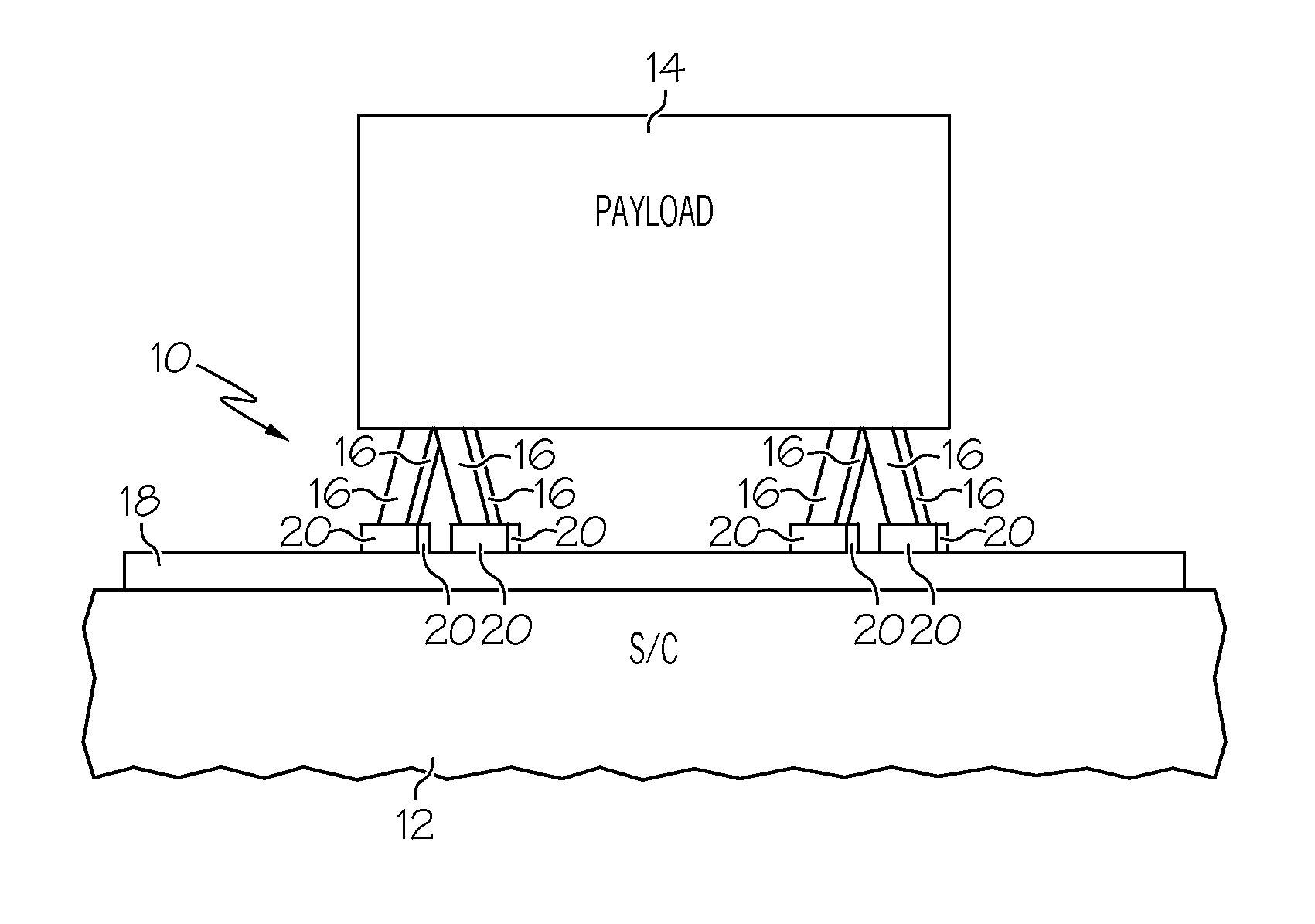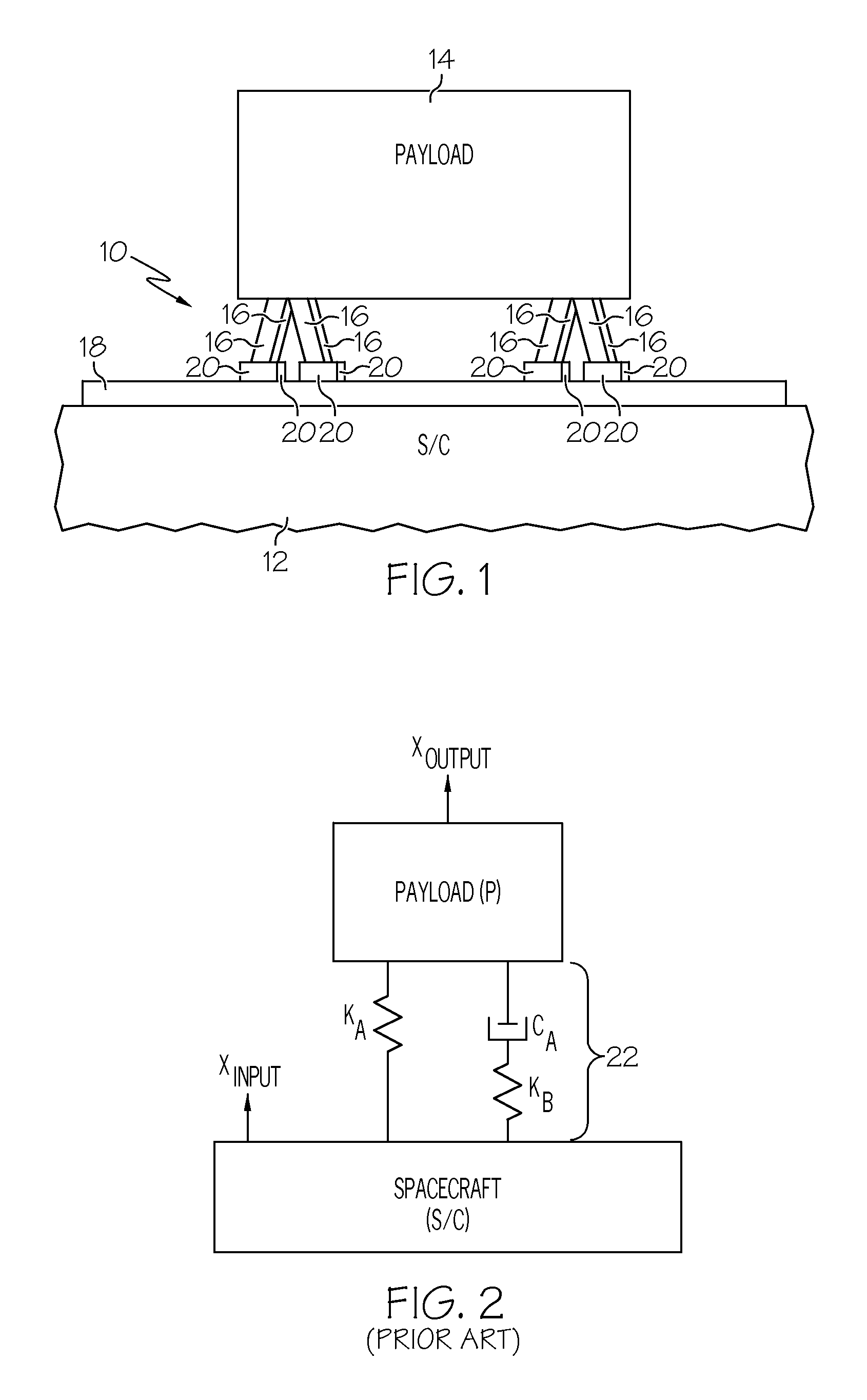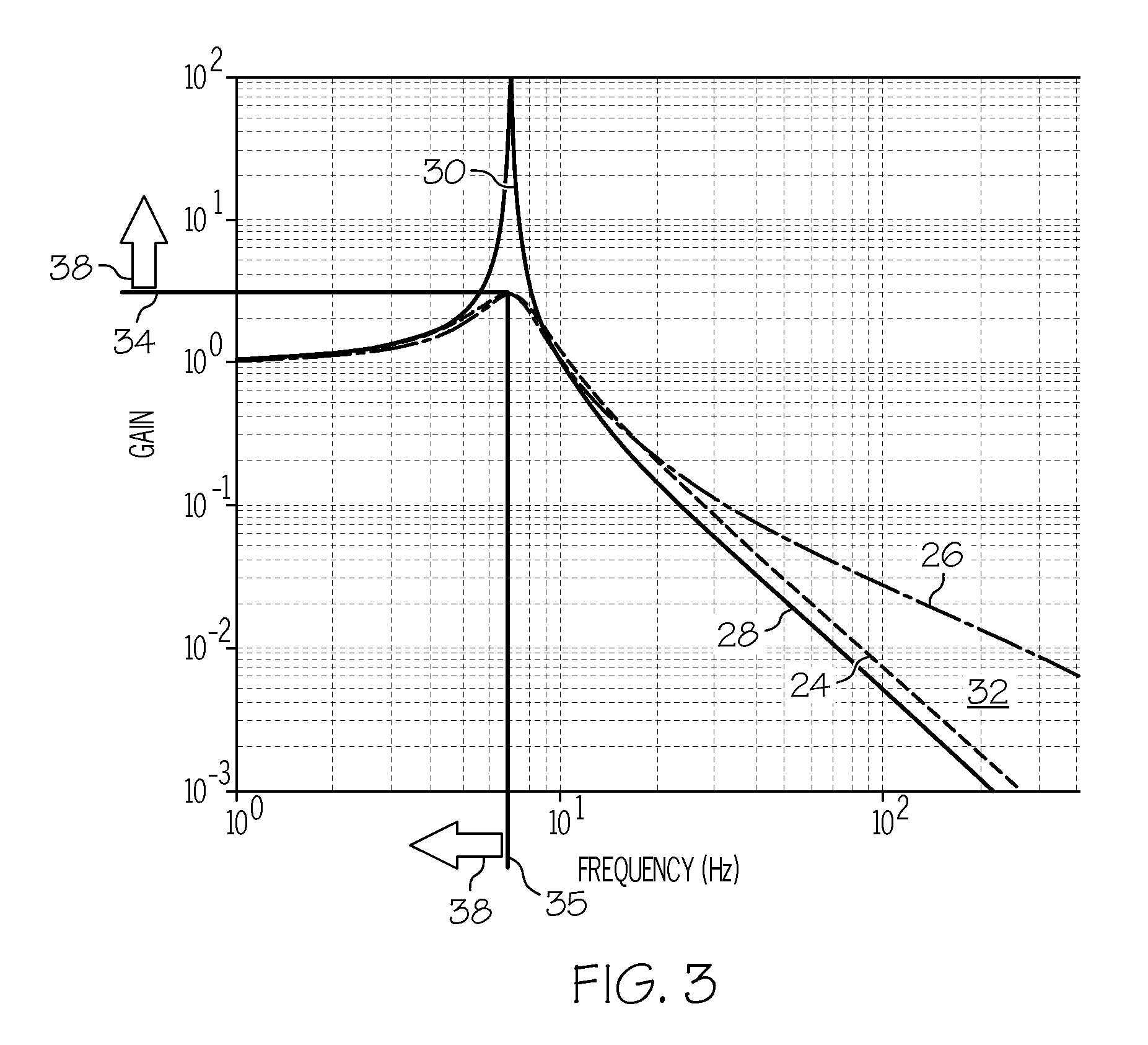Passive isolation devices providing low frequency damping of low mass payloads and spacecraft isolation systems employing the same
a low-mass payload, passive isolation technology, applied in the field of spacecraft isolation systems, can solve the problems of high manufacturing difficulty of belts, inability to meet mission requirements, add undesired bulk, weight, complexity, cost to the isolation system,
- Summary
- Abstract
- Description
- Claims
- Application Information
AI Technical Summary
Benefits of technology
Problems solved by technology
Method used
Image
Examples
Embodiment Construction
[0014]The following Detailed Description is merely exemplary in nature and is not intended to limit the invention or the application and uses of the invention. Furthermore, there is no intention to be bound by any theory presented in the preceding Background or the following Detailed Description.
[0015]FIG. 1 is simplified schematic of a spacecraft isolation system 10 illustrated in accordance with an exemplary embodiment of the present invention and well-suited for reducing the transmission of vibrations from a spacecraft 12, such as a satellite, to a low mass payload 14 carried by spacecraft 12. Isolation system 10 includes a plurality of low frequency isolation devices 16, which are mechanically coupled to and collectively support payload 14. The opposing ends of low frequency isolation devices 16 are mounted to a spacecraft mounting interface 18 utilizing a plurality of mounting brackets 20. Low frequency isolation devices 16 are single degree-of-freedom dampers, which each provi...
PUM
 Login to View More
Login to View More Abstract
Description
Claims
Application Information
 Login to View More
Login to View More - R&D
- Intellectual Property
- Life Sciences
- Materials
- Tech Scout
- Unparalleled Data Quality
- Higher Quality Content
- 60% Fewer Hallucinations
Browse by: Latest US Patents, China's latest patents, Technical Efficacy Thesaurus, Application Domain, Technology Topic, Popular Technical Reports.
© 2025 PatSnap. All rights reserved.Legal|Privacy policy|Modern Slavery Act Transparency Statement|Sitemap|About US| Contact US: help@patsnap.com



